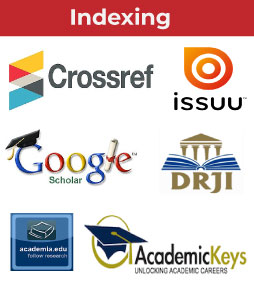The Evolution of Web Accessibility Guidelines: A Comparative Analysis of WCAG 2.0 and WCAG 3.0 in Ensuring Inclusivity on the Web.
WCAG 2.0 and WCAG 3.0 in Ensuring Inclusivity on the Web.
DOI:
https://doi.org/10.70774/ijist.v1i1.18Keywords:
Web Accessibility, WCAG 2.0, WCAG 3.0, Inclusivity, Digital Landscape, Comparative Analysis, Qualitative analysis, Inclusive web design approach, Challenges in implementing WCAG 3.0.Abstract
This paper compares WCAG 2.0 and the emerging WCAG 3.0, investigating their evolution and impact on web accessibility. Emphasizing the pivotal role of web accessibility in inclusive digital design, the study aims to ensure effective access for users with disabilities. While WCAG 2.0 has been a cornerstone, WCAG 3.0, also known as the Silver draft, represents a substantial update addressing limitations and introducing innovative approaches. Using a mixed-method approach, including expert interviews, user testing, and feedback sessions, the study explores WCAG 3.0's changes and improvements, evaluating their effectiveness for diverse disabilities and inclusive web design. The background underscores WCAG 2.0's adoption and impact on enhancing user experiences for individuals with disabilities. It emphasizes the need for a comprehensive exploration of WCAG 3.0, referencing studies on user perspectives, assistive technologies, implementation challenges, and success factors. Identifying research gaps, the paper advocates for deeper investigations into user-centric evaluations, comparative analyses, and education strategies. The assessment highlights key improvements in WCAG 3.0, such as its user-centric approach, flexibility, and technological adaptability. However, implementation challenges, including technical complexity, resource allocation, guideline interpretation, technology integration, organizational culture, monitoring mechanisms, legal considerations, and user engagement, affect adherence to WCAG 3.0. In conclusion, the research provides insights into the evolution of web accessibility guidelines, signaling WCAG 3.0's potential as a significant advancement. It aims to empower stakeholders in fostering an inclusive digital landscape and advocates ongoing efforts for a universally accessible web for individuals with diverse abilities.




